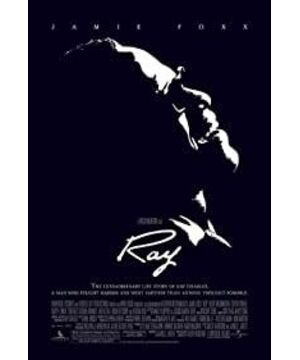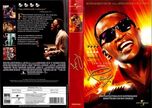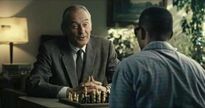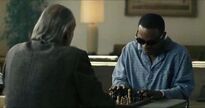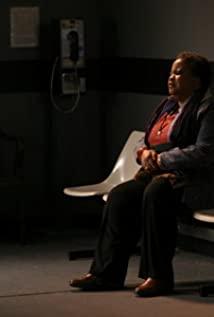Jamie Fox played great. Except for a few major supporting roles, the other characters are a little bit out of touch. They don’t feel like they belong to the same world. Maybe the director didn’t think about these characters’ plays either...
Lei’s role (adult: Jamie Foxx) mainly focuses on his unique movement methods and body language, especially the anxiety of drug addiction after the drug addiction in the later stage is mixed with the original actions, resulting in extremely Iconic image. Regarding the delusion caused by childhood shadows to Lei, the few surreal scenes (actually delusional scenes) mainly emphasized the two elements of flooding + corpse, but from the perspective of Lei’s childhood experience that is gradually revealed later, The two actions of flooding the floor and touching the corpse are actually different from what actually happened. The director did not make enough connection between the presentation of these two actions in reality and the presentation of paranoia in Lei's mind. For example, touching the hands and feet. If there is any movement in Lei’s memory of touching George’s hands and feet soaked in water, at least this must be photographed to show the audience the similarity between the scene and the paranoid scene, so as to make the paranoia. The confusion of memory has its roots.
Other characters also have their own highlights. For example, in the close-up/close-up shots of Bey (Kelly Washington) and Ray's double-up, it is obvious that the tiny muscles on her face are trembling when it comes to emotions. Another example is Fathead (Borkim Woodbein), although there are not many scenes in the second half of the scene, but when he is shown the camera (01:42:31), he has an action of scratching his forearm-this action is slightly forward A paragraph appeared repeatedly on Lei, and was explained to the audience by Yamet (Curtis Armstrong) admonishing Lei to stop taking drugs: this is the action when drug addiction occurs! Therefore, with such an confession, although the action of Fat Tou is very hidden, it can also provide some information: For example, Fat Tou is still affected by drugs, and at the same time, after Lei’s transition to the high-end route, possible economic constraints will also be encountered. Interfere with his maintenance of this kind of life, and so on.
The transition method is very characteristic. The red curtain during flashback seems to suggest the color felt by the remaining optic nerve when the sun shines on Lei’s face. Each of us has experienced closing our eyes in the sun to feel the color in front of us. : It's just such a red light-in fact, even when you close your eyes in the dark night, you can't see the complete blackness (there is a line in "Exhausted" that has a similar meaning). Considering that the part of the flashback is basically Lei’s inner drama (from the adjustment of the tone, it can be seen that those are not completely realistic scenes but just memories), so even if this red light is (physically) worn It's okay to let his blind eyes enter his mind.
The transition method when switching scenes in chronological order, as well as the depiction of the popularity of thunder, are bound to the times and occasions-such as circle in and out, fade in and out afterwards; for example, banners with white characters on a red background, to different pubs Neon lights, to the bulletin board list...
Ray Charles’ story is by no means limited to those mentioned in the film, but it specifically tells his history of success and the process of "contact-addiction-resistance" with drugs, and combined with the shadow of childhood to create a certain degree of thinking about drug use. Sexuality at the same time wins the pity of the audience. Such a method of selecting materials is smart enough. Regrettably, there is one character's advantage that has been worn out in the process of selecting such materials, that is, anti-racism. Although the film has always intentionally or unintentionally shown racial discrimination (such as the "COLORED" logo on the bus), the refusal to act in Georgia to highlight the advantage of "anti-racism" is actually not a character The motivation is laid out, because there is no strong plot conflict directly related to the issue of racial discrimination, we cannot directly extract a reason from the previous plot that Lei must stand on the side of the anti-racism camp. In that scene, he refused. The action of the acting lacks support, so that the merit of the character "anti-racism" which is very worth mentioning becomes a mirror image.
View more about Ray reviews


